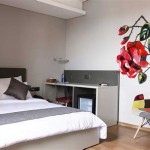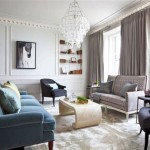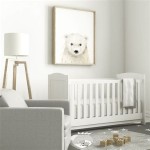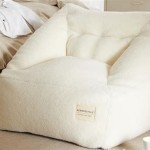Modern Homes Decorating Ideas
Modern home decorating evokes a sense of clean lines, minimalist aesthetics, and a focus on functionality. It emphasizes simplicity, incorporating natural materials, and prioritizing open spaces. While embracing a contemporary feel, modern design is also adaptable, allowing for personal touches and creative expression. This article explores key elements and principles of modern home decorating, offering practical ideas for achieving a balanced and stylish living space.
Embrace Minimalism and Functionality
Modern design thrives on minimalism, promoting a sense of order and clarity. This approach emphasizes functionality, prioritizing items that serve a purpose and eliminating clutter. Keep furniture pieces to a minimum, opting for multi-functional designs that maximize space efficiency. When choosing furniture, focus on clean lines, simple shapes, and neutral colors. Consider furniture with built-in storage solutions to minimize visual clutter.
Streamlining decorative elements is another cornerstone of modern design. Avoid excessive embellishments and intricate patterns, opting for simple and streamlined accents. This can be achieved by using a limited color palette, incorporating natural textures like wood or stone, and incorporating geometric shapes in furniture, lighting, or artwork.
Prioritize Natural Light and Open Spaces
Modern design values open spaces, prioritizing free flow of light and maximizing a sense of spaciousness. Maximize natural light by incorporating large windows and glass doors, creating a connection between the interior and exterior. When designing layouts, consider open floor plans that minimize walls and create a seamless flow between different living areas. This fosters a sense of airiness and enhances the overall light and spaciousness of the home.
Mirrors can further enhance the sense of openness and light by reflecting existing natural light sources, making the space feel larger and brighter. Strategic placement of mirrors can also create illusions of depth, visually expanding the space and adding a touch of sophistication. This approach not only enhances the visual appeal of the room but also contributes to a more inviting and welcoming atmosphere.
Embrace a Neutral Color Palette
Modern design embraces a neutral color palette, relying on a base of white, gray, or black for walls and furniture. This creates a clean and calming atmosphere while providing a versatile backdrop for introducing pops of color through accessories or artwork. Neutral colors also create a sense of spaciousness, allowing light to bounce around the room and making the space feel larger.
To add depth and dimension, consider introducing subtle variations in texture and color. This can be achieved by incorporating natural materials like wood, stone, or leather, each adding unique visual interest to minimalist designs. However, avoid overwhelming the space with too much color or embellishment. The idea is to create a balanced and harmonious environment by incorporating a limited number of carefully chosen accent colors.
Utilize Natural Materials and Textures
Modern design embraces the beauty of natural materials, often incorporating wood, stone, leather, and metal into furniture, accessories, and décor. These materials have a raw and organic appeal that complements the clean lines and minimalist aesthetics of modern style. Wood surfaces add warmth and texture, while stone accents bring a sense of sophistication and permanence.
Natural materials also contribute to the sustainable aspect of modern design. Choosing materials sourced from sustainable practices minimizes environmental impact and promotes eco-conscious choices. Incorporating natural textures into rugs, throws, or curtains adds warmth and tactile interest to the space, creating a cozy and inviting atmosphere.
Integrate Smart Technology
Modern homes are increasingly incorporating smart technology to enhance functionality, comfort, and sustainability. Smart home features like voice-activated lighting, automated temperature control, and security systems seamlessly blend with modern aesthetics, enhancing the functionality of the living space.
Smart technology contributes to a more efficient and convenient lifestyle. By integrating devices that automate everyday tasks, modern homes provide an environment that is not only stylish but also functional and responsive to individual needs. These features also promote energy efficiency, contributing to a more sustainable and eco-conscious way of living.
Embrace Eclectic Touches
While modern design emphasizes minimalism and clean lines, it doesn't have to be overly sterile or impersonal. Incorporating personal touches and eclectic accents can add warmth and character to the space. For example, a vintage rug or a collection of unique artwork can complement the modern aesthetic while reflecting the homeowner's individual style and interests.
Eclectic touches can add vibrant pops of color and personality to a predominantly neutral space. They can be incorporated through artwork, sculptures, textiles, or decorative elements, contributing to a more layered and dynamic design. The key is to choose pieces that complement the overall aesthetic and enhance the sense of individual character within the space.
Prioritize Functionality and Flexibility
Modern homes prioritize functionality and flexibility, adapting to changing needs and lifestyles. This emphasis results in layouts that are both efficient and adaptable, allowing for a range of uses within the same space. This can be achieved by incorporating multi-functional furniture like sofa beds, storage ottomans, or modular shelving systems. These pieces contribute to maximizing the space's functionality while maintaining a minimalist aesthetic.
Flexible furniture pieces allow for versatile use, adapting to different needs and activities. Whether it's a living room that transforms into a home office or a dining room that effortlessly becomes a guest room, modern design prioritizes creating spaces that can evolve along with the homeowner's lifestyle.
Incorporate Geometric Shapes
Modern design often incorporates geometric shapes in furniture, lighting, and décor. Simple geometric patterns create a sense of order and visual interest, complementing the clean lines and minimalist aesthetics of modern style. This can be achieved by incorporating furniture with geometric legs, using rugs or cushions with geometric prints, or displaying artwork featuring abstract geometric shapes. These elements add a modern touch to the space while maintaining a sense of balance and elegance.
Geometric shapes can be incorporated in various ways, adding visual interest and dimensionality to the space. For example, a square coffee table can be paired with a round area rug, creating a playful contrast while maintaining an overall sense of coherence. This interplay of shapes adds depth and visual interest to a space that might otherwise feel too stark or minimalistic.

40 Contemporary Decorating Ideas For Your Home Bored Art Living Room Decor Modern Sectional Livingroom Layout

Harold Williams Haroldwilliamse Modern Apartment Design Living Room Decor Interior

Livingroom Ideas Decor Decorating Id Contemporary Living Room Luxury House Designs Open

Modern Home Decor Ideas For And Skeptics Alike

100 Modern Home Decor Ideas

45 Irresistibly Stylish Midcentury Modern Living Room Idea

77 Best Living Room Decor Ideas 2025 Unique

Simple Modern Fall Decorating Ideas Zdesign At Home

25 Tips For Decorating A Modern Home Extra Space Storage

25 Beautiful Modern Living Room Interior Design Examples Contemporary
Related Posts







